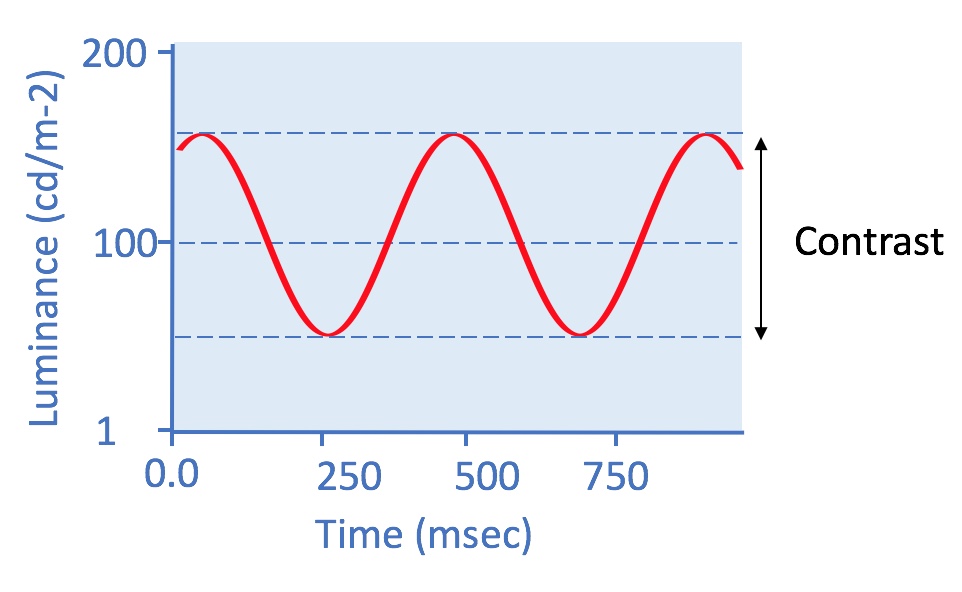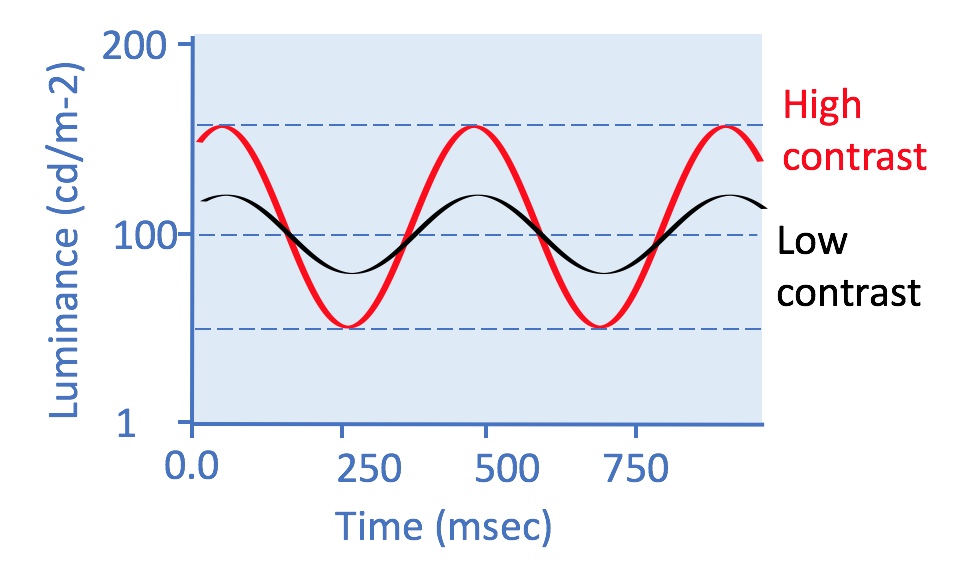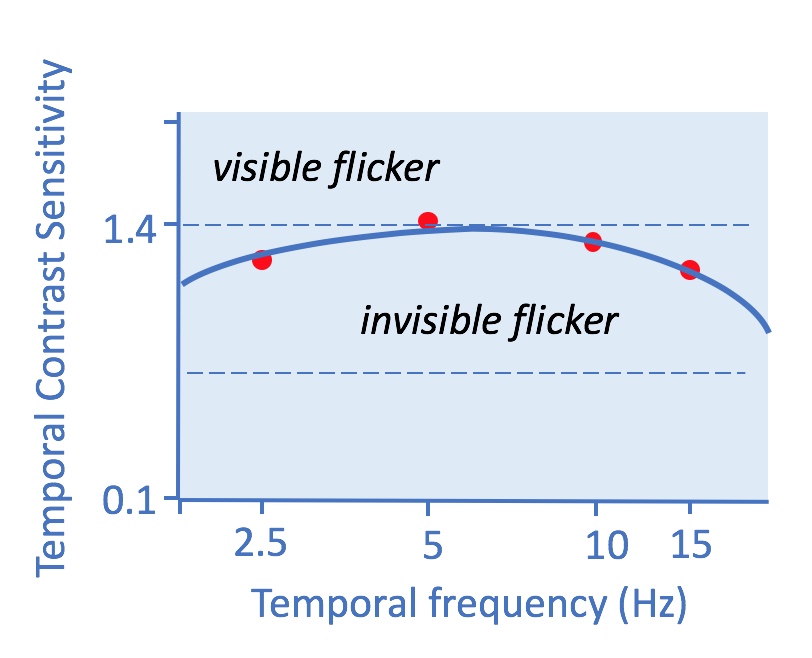Temporal contrast sensitivity measures the sensitivity to contrast (i.e., modulation depth) as a function of time. This can be achieved by presenting stimuli that vary sinusoidally over time; it is like presenting a grating pattern in time instead of space. Like sensitivity to spatial contrast, sensitivity to temporal contrast is determined by age, degenerative disease, and stimulus features (for example: stimulus size, presence of surrounds, etc.). However, unlike sensitivity to spatial contrast, temporal sensitivity is rather insensitive to ocular scatter, refractive defocus and lens absorption, caused by increased optical density due to aging.
Why should I measure temporal contrast sensitivity?
Temporal contrast sensitivity function (TCSF) can inform the investigator on:
- The light and dark adaptation abilities of an observer
- Age-related visual loss due to a natural aging process
- Age-related visual loss due to age-related diseases, such as age-related macular degeneration or glaucoma.
- The role played by some genes in the production of molecules involved in the photo-transduction cascade.
- The progression of a disease or the effect of a clinical intervention.
How can I measure temporal contrast sensitivity?
TCSF is typically measured with a spatially homogeneous disc whose luminance varies sinusoidally over time (see figure 1). Its contrast (or modulation) is the difference between the minimum and maximum luminance, and its temporal frequency is the number of cycles in a second.

When the contrast is relatively high, observers perceive the stimulus as flickering; as the contrast decreases it becomes more and more difficult to see the flicker; at very low contrast levels, the stimulus appears steady. The contrast threshold at which the flicker is just visible/invisible depends crucially on the temporal frequency of the stimulus; therefore to characterise its function a TCSF test will measure the sensitivity over a range of temporal frequencies.
Metropsis allows investigators to measure temporal contrast sensitivity in a few minutes by presenting a test pattern and repeatedly adjusting its contrast until the flicker is just visible. Figure 2 shows an example of two stimuli with different contrast. As the contrast decreases it becomes more difficult to perceive the flicker.

When the investigator launches the TCSF test from the Metropsis App, Metropsis presents a flickering stimulus with varying temporal frequency on the CRS Display++ LCD. The monitor contains an integrated real-time sensor system, which enables the display to remain calibrated over time.
The temporal stimulus is displayed on either side of central fixation cross. The observer is instructed to report the position of the stimulus (i.e. left or right) by pressing either of two keys on the response box.
If the observer answers correctly, on the next presentation the stimulus contrast decreases; if the observer answers incorrectly, the stimulus contrast increases. This procedure is designed to find the minimum contrast required to perceive the stimulus as flickering.
This adaptive procedure continues until a contrast threshold is found for each temporal frequency.
During the experiment, the examiner can monitor the performance of the subject from the Metropsis App.
Metropsis offers a quick and reliable test for measuring temporal contrast sensitivity over a large range of temporal frequencies. The higher the number of temporal frequencies used, the more accurate the estimate of the TCSF peak and cut-off frequency.
Figure 3 shows a typical contrast sensitivity function (blue line) measured with Metropsis in an adult with normal vision.

There are other stimulus features that also influence the TCSF; for example, its size, its luminance and its retinal location. The Metropsis TCSF test allows the investigator to easily customise these variables, including the mean background level.
Measuring the temporal CSF at different light levels
Metropsis allows investigators to measure the TCSF not only at photopic light levels but also at mesopic and scotopic levels. This can be achieved by mounting calibrated neutral density filters on the Display++ LCD monitor, as described for the spatial contrast sensitivity test.
